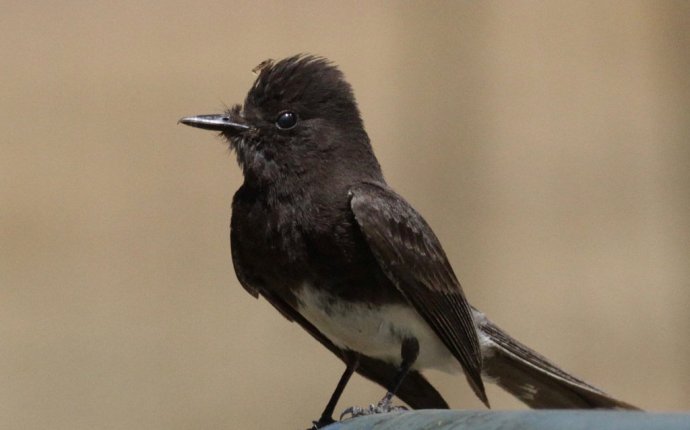
Black Phoebe Facts
 One of the more common birds around households in the west, the “phoebe”, pronounced “fee-bee”, comes from the high pitched short, thin whistled call of this bird (listen). In Greek mythology, Phoebe is the “moon goddess”, but I doubt if that had anything to do with the bird’s naming. Black and white, it is usually seen near water where it finds a perch from which to sally out to catch flying insects. Like all flycatchers and, it has a small hook on the tip of its upper bill to help catch larger insects, which it beats on a branch before swallowing. While perched, it frequently flicks its tail up and down, characteristic of the flycatcher family.
One of the more common birds around households in the west, the “phoebe”, pronounced “fee-bee”, comes from the high pitched short, thin whistled call of this bird (listen). In Greek mythology, Phoebe is the “moon goddess”, but I doubt if that had anything to do with the bird’s naming. Black and white, it is usually seen near water where it finds a perch from which to sally out to catch flying insects. Like all flycatchers and, it has a small hook on the tip of its upper bill to help catch larger insects, which it beats on a branch before swallowing. While perched, it frequently flicks its tail up and down, characteristic of the flycatcher family.
I did my PhD research, many years ago, on flycatchers. As part of this research I filmed flycatchers catching insects in midair. It was thought at the time that (rictal) bristles on the corner of the jaws were used as sweep nets for insect capture, but I discovered that flycatchers only caught flying insects by snapping the tip of their bill onto the prey. Then the question became “what are the bristles for?” Most all birds have these facial bristles, including the Bald Eagle that doesn’t eat insects and the Kiwi that doesn’t fly. Years later ornithologists discovered that the bristles seem to be sensory devices, sensing air speed and direction, or, in the case of the Kiwi, at least, function like cat’s whiskers.
The Black Phoebe is a relatively unwary bird and is happy to inhabit backyards and build its mud nest on the side of a house or garage. It likes bridges as well which gave it its colloquial name of “bridge pewee”. It just has to have some sort of overhanging ledge like a railing or gutter. Unlike many birds, the Black Phoebe is increasing in population because of its tolerance for human activities and structures. The only limiting factor is appropriate nest sites. Everyone is familiar with bird houses, but these only attract hole-nesters such as bluebirds and wrens. You can provide a nest platform for Black Phoebes, which will also work for Robins and others. If interested, you can see plans for a Phoebe nesting platform here.
I am reminded of Phoebe Snetsinger. Birdwatchers are a competitive bunch, trying to see how many species they can see in a lifetime and Phoebe is an icon. Phoebe was not an avid birdwatcher until she was diagnosed with cancer in 1981. Instead of convalescing at home, she took to traveling the world watching birds. Independently wealthy and with her cancer in remission, she birdwatched until she was killed in an auto accident in Madagascar in 1999. At the time of her death she had seen 8, 400 species of birds in the wild, more than anyone else at that time. Snetsinger’s memoir, Birding on Borrowed Time, was published posthumously in 2003. An unusual Phoebe, indeed. I don’t know who holds the record now and it’s all on the honor system anyway. Me? I’m approaching 3000, I think.









